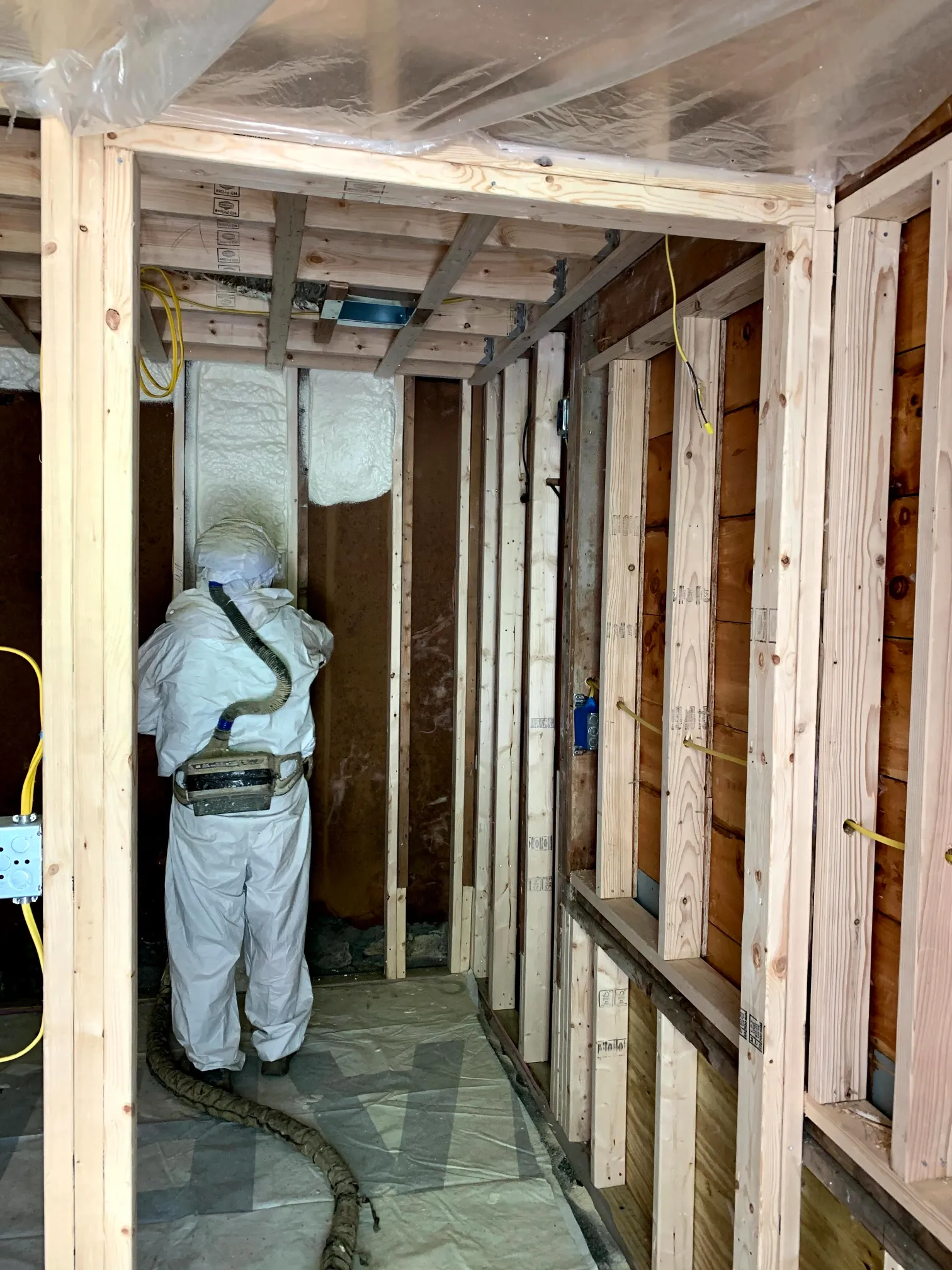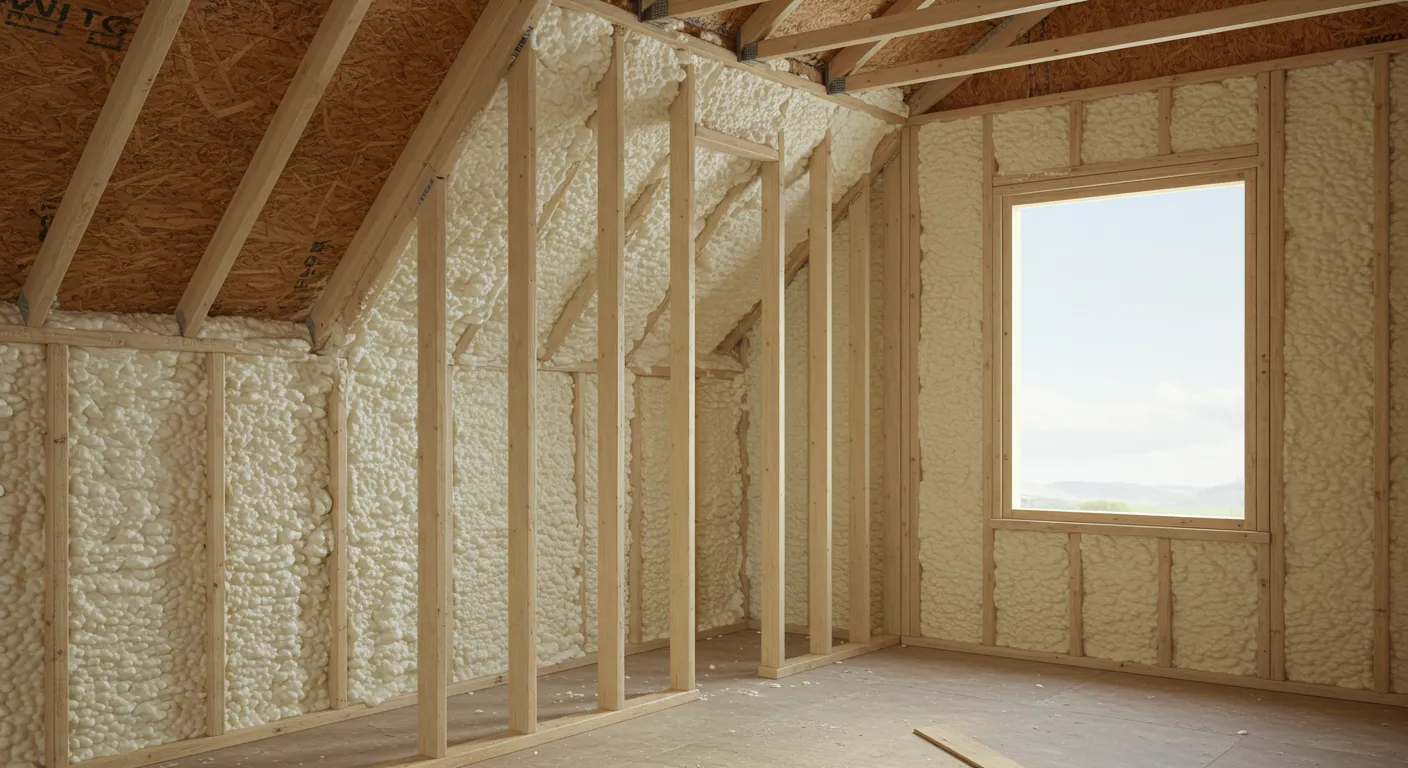
Spray foam insulation performance depends on a combination of environmental, installation, and material-based variables. Core factors include substrate condition, ambient temperature and humidity, foam type, application technique, and curing conditions. Mistakes in any of these can lead to poor R-value performance, shrinkage, off-gassing, or delamination.
Material properties and installer experience directly influence long-term thermal performance, air sealing capability, and structural behavior. Lamothe Insulation & Contracting has encountered these variables across various residential and commercial projects, providing firsthand insights into optimizing outcomes.
| Factor | Description |
|---|---|
| Foam Type | Open-cell or closed-cell; affects density, R-value, and moisture resistance |
| Application Temperature | Substrate and ambient temperature must fall within manufacturer-recommended range |
| Humidity Levels | Excess humidity can interfere with foam adhesion and curing |
| Substrate Condition | Clean, dry, and stable substrates improve foam bonding and expansion |
| Mixing Ratio (2-Part Foam) | Imbalanced components lead to improper curing and performance issues |
| Spray Technique | Spray thickness, passes, and overlap influence coverage and integrity |
| Curing Time and Conditions | Poor airflow or low temperatures slow down curing, affecting cell structure |
| Installer Skill | Precision, awareness of environmental conditions, and adjustment ability are critical |
| Building Design Factors | Wall depth, access points, and thermal bridging affect how insulation performs in real use |
| Feature | Open-Cell Foam | Closed-Cell Foam |
|---|---|---|
| R-Value per Inch | 3.5 to 3.9 | 6.0 to 7.4 |
| Density | 0.5 lb/ft³ | 1.75 to 2.2 lb/ft³ |
| Vapor Barrier | No | Yes |
| Soundproofing | High | Moderate |
| Cost per Board Foot | Lower | Higher |
| Best Use Case | Interior walls, sound control | Crawl spaces, roofs, exterior walls |
| Moisture Resistance | Moderate | High |
| Property | Open-Cell Foam | Closed-Cell Foam |
|---|---|---|
| Expansion Rate | 100x | 30x |
| Perm Rating (10 mil) | 10-15 perms | <1 perm |
| Structural Support | No | Yes |
| Air Seal Rating | Excellent | Excellent |
| Temperature Range | -40°F to 180°F | -60°F to 250°F |
| Flame Spread Index (ASTM E84) | <25 | <25 |

In New England, high humidity levels and wide seasonal temperature swings demand precise timing during application. Sub-zero conditions in winter can cause substrate surfaces to cool below the required spray temperature, impacting adhesion. Lamothe Insulation & Contracting accounts for this by using thermal scanning tools pre-application and adjusting cure times accordingly.
Bonus Tip: Avoid spraying foam directly on wet or frozen wood. It leads to peeling, separation, and reduced thermal resistance.
Bonus Tip: For attics in coastal Massachusetts, closed-cell foam is often preferred due to its high resistance to humidity-driven degradation.
Depends on type: Open-cell typically requires 3″, closed-cell may only need 2″ for the same thermal performance.
Yes, but substrate temperatures must be monitored and product formulations adjusted to prevent curing issues.
No. Closed-cell provides moisture control and strength; open-cell is better for sound absorption and flexibility.
A typical residential job may take 1-2 days, including prep and cure time.
For reliable advice based on field experience and proven application methods, contact Lamothe Insulation & Contracting.
Phone: (508) 847-0119 Email: [email protected]
Whether it’s new construction, renovation, or insulation upgrades, ensure each layer delivers the thermal protection your structure demands.
No significant degradation occurs if installed properly. The R-value remains stable for decades under normal conditions.
Yes, but compatibility and ventilation must be verified first. Blown-in insulation is sometimes added for acoustic or thermal layering.
Fully cured foam is inert and safe. Off-gassing occurs only during the initial 24-hour curing window.
Even coverage, firm texture, and adhesion to substrate are visual indicators. Thermal imaging can verify air sealing performance.
Indirectly. Its airtight seal can reduce entry points for insects and rodents.